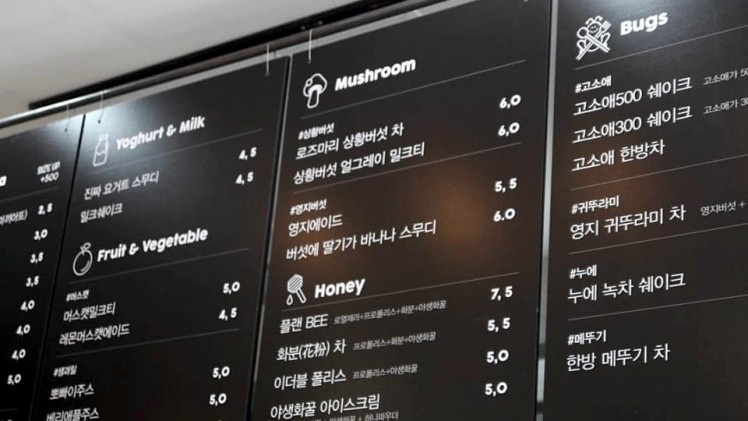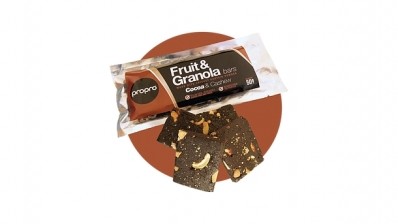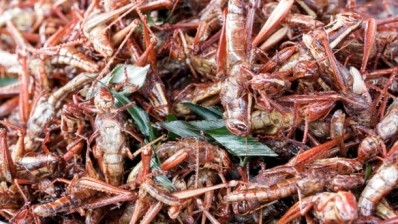Insects on the world’s menus: Why not?

Being the vibrant city that it is, the streets are bursting with street food, family eateries and all sorts of proper restaurants. Little prepares you to the culinary explosion of Thailand’s flavours; nothing readies you either, as a Westerner, for the experience of eating insects.
Nothing…? Well, not exactly. Things are changing, mentalities are evolving, and soon crickets, worms and other insects might be more common than we expect, not only as our food’s hidden ingredients, but also on the menus at our favourite restaurants. From famous chefs to small food trucks, a revolution is on its way—and not just in Bangkok.
Let’s start with no less than the multiple winner of the World’s Best Restaurant accolade: Noma. This Copenhagen-based institution somehow began the revival of an insect-eating trend a few years ago. Its Chef, René Redzeppi, known for his organic, sustainable approach to food, put red ants à la carte.
His Beef tartar with sour ants quickly became a signature dish in the world of the foodies. It must be said that it shouldn’t have come as a complete surprise, as he famously ventures into Danish forests each morning to forage for the ingredients that will be formed into his lunch menu.
With the same style that he became known for, he designed his ephemeral restaurants initiatives: at the launch of his pop-up restaurant in London, “The Taste of Noma”, set up in the renowned Claridges, and in his Tokyo endeavour, taking place in the Mandarin Oriental hotel, ants were on the menu.
If Chef Redzepi and his Nordic Food Lab project were pioneers in introducing insects on big tables’ menus, they are, by now, not the only ones.
In Brazil, Alex Atala, chef and owner of D.O.M., ranked eleventh best restaurant in the world in 2016, included in his sophisticated cuisine bugs and other Amazonian ingredients, acknowledging Brazilian’s native food culture.
As part of his US$200 menu, you can spot a desert he created as “a raw Amazonian leaf-cutter ant on a pineapple cube”, which quickly became the establishment must-have. In the US, chef Julian Medina opened a Mexican gourmet restaurant, Toloache, now in three different locations in New York, serving insects. His refined Latin cuisine has been including traditional delicacies such as chapulines tacos since 2007.
Although slightly less refined, another place in the Big Apple has been receiving acclaim for its use of insects: The Black Ant. In this “bright, airy, below-street level cantina” you can savour ants and other insects under various clever forms, which makes it the perfect entry-level entomophagist paradise (or their friends’ worst nightmare). Not everyone might be ready to eat insects, but what about sipping on a Yum Kaax, a cocktail made of Tequila, wild Mexican herbs, homemade corn juice, and “sal de hormiga”?
See, you didn’t catch the bug in there, but “sal de hormiga” is a salt containing ants. And as a main, you can have cricket tacos topped with sweet and spicy mole jam, which is one of Toloache’s signature dishes.
In number, it is actually the West coast that is leading in the number of restaurants in the US serving insects. Places like Typhoon, Don Bugito, or La Sandia all propose to try some original and interesting tastes. Once again, no need to bring only insect-eating friends: all of these places have mostly non-insects dishes too.
In London, at another famous landmark, The Archipelago, which serves all kind of unusual dishes, you can find “crickets on couscous” or the “mealworm and cricket salad”, and then for the sweet tooth, a bumblebee dessert, just to challenge your taste.
The entomophagy trend has definitively been democratised as people read, hear, and learn about the eating-insects rationales. And as they travel, too: in Asia, the insect-eating tradition is still very present. It is not rare to see bugs given in mouth-watering school lunches to students (If you don’t believe me, search for the BBC documentary “Will Eating Insects Save the World?”).
Yet, there are still large markets yet to be convinced. As the owner of the Seoul coffee shop, Edible.Inc, told us, Koreans’ reactions are still wide-ranging:
"Some people are excited, others are a little uneasy. But once we politely tell them the pros of edible insects, most of them are willing to eat the dish and tell others about their experience."
The Siem-Reap based Bugs Café co-founder and chef, Davy Blowhard, describes the same experience when asked about his customers’ reaction to eating insects. His restaurant boats a very encouraging rating from his 333 Tripadvisor reviews: 4.5*/5. A fantastic score, about which he is modest, but that proves the likability of his food, almost entirely made of insects.
He also emphasises the educational and cultural aspect of the approach of entomophagy: "When they realise what our place is about, some people are scared, some are amused or even enthusiastic, some others are disgusted or intrigued.
“But once you manage to talk to them and properly explain the environmental, health and taste qualities of our menu, insect-eating stops being a total absurdity and becomes something acceptable. After a five-minute talk, you can make most people move from "Oh god, never!" to "Why not?"
And indeed, this remains the major question: Why not? Why not when we know about the high environmental impact of intense animal farming, the resource stress from a growing global population and the lack of efficiency for the production of 1kg of meat.
Why not when we know that our ancestors were probably eating insects as far as we know around 30.000 BC, if referred to cave paintings in the north of Spain.
So ask yourself again if you haven’t already… Why not?
- Massimo Reverberi is the Italian founder of Bangkok-based Bugsolutely , which manufactures pasta made from cricket flour.













